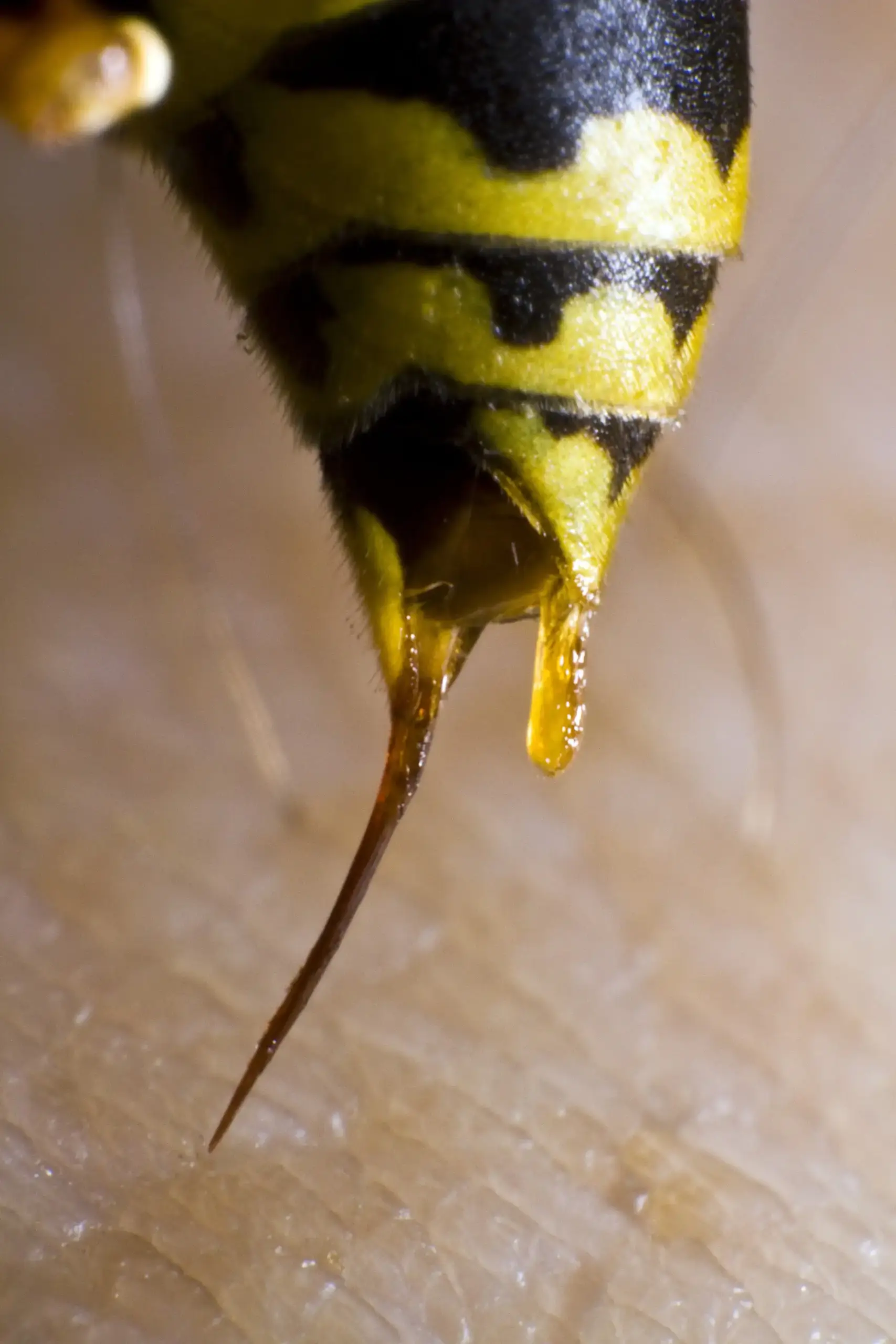The Dangers Of A Yellow Jacket Ground Nest
Few people are fans of wasps of any kind, but one of the most hated is the ground-nesting yellow jacket. It may seem innocuous at first, but here are the dangers of a Yellow Jacket ground nest.
Naturally Aggressive

At the local county fair, we recently finished reserving our spot on the bleachers for the demolition derby. As we casually strolled out, every other child jumped and let out a few shouts and tears. As I rounded the corner, I quickly saw a stream of Yellow Jackets underneath the bleachers. The less fortunate (and less observant) children ahead walked within inches of the nest entrance. Yellow Jackets are one of the more aggressive wasps by nature. When you add the proximity to their home, it is no surprise that they dealt out multiple stings. Sadly, most people are not going to notice the Yellow Jackets until they are within the red alert zone.
Sneak Attack
As mentioned above, their attacks will sneak right up on you. In the case of the fair, it was simply walking in a designated path. Ground nests are just as commonly found by lawnmowers and weed whackers. Yard maintenance often involves machinery that covers ground quickly. Riding down mowers, push mowers, and weed whippers are often the culprits of stirring up a nest of Yellow Jackets as they pass over or beside it.
If these nests are hard for a 3 foot tall human to notice as they walk along, they are even more difficult to notice on a riding lawn mower. The operator is typically watching the lines and looking out for toys left by the neighbors’ kids or pets and will have a hard time noticing a few Yellow Jackets entering a hole the size of a pencil. This tees things up nicely for the disturbed Yellow Jackets to attack the yard keeper unawares. When their distress signal goes out, all of their nearby buddies will join in the attack.
The Back Door(s)
After a painful sting, revenge tends to enter the mind soon thereafter. The location of the nest is burned in the victim’s mind and they soon come back with some form of Yellow Jacket destruction tool and go right to work. With all of their focus on that entry point, most are surprised once again by an attack from behind or the side. Yellow Jackets that nest in the ground often times leave multiple entries and exits into the nest. Sometimes these are a few inches apart but may be several feet in distance. As liquid, aerosol, fumes, etc. make their way into one hole, they are sure to come out fighting from the other holes.
Pesticidal Black Hole
These multiple tunnels and voids underground are naturally difficult to treat. Liquids rush to low spots and swap into the ground before contacting everything needed. Dusts and aerosols tend to follow the tunnels of least resistance missing some key chambers. I have seen aggravated homeowners dump over 10 gallons of pesticides down a Yellow Jacket hole to no avail. The key is to apply small amounts of a product designed for Yellow Jackets and work your way back into the ground opening things up as needed. This is obviously precarious and should include caution and protection such as bee suits.
The Delay
Once the nest has been neutralized and destroyed as much as possible without recruiting a backhoe, there is the threat of the delated travelers. Yellow Jackets frequently travel quite far from the nest in hunt of food and building resources. Some of these may have missed out on the entire showdown. If there are enough of them, they may re-excavate the nest or start a new one. If you are lucky, they will move off of your property, but sometimes they just create a new surprise for you.
Opportunistic Pests
If you don’t completely destroy the nest and fill in all of the voids and tunnels underground, it opens the door for other pests to take over the shelter. In some cases, the void will be quite small such as a golfball, but they can excavate underground voids larger than a basketball.
Avoid The Dangers Of A Yellow Jacket Ground Nest
Whether you tackle it yourself or hire an expert, regularly inspect the yard for potential issues. Ground nesting yellow jackets tend to follow each other in a line on regular intervals. Tracking such sitings will help track down issues before the great sting is the indication. The wasp and yellow jacket experts at Rove Pest Control are there to help get and keep things under control.
